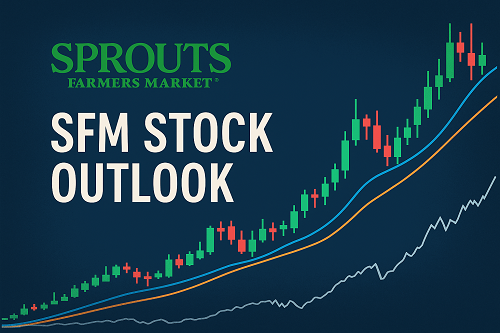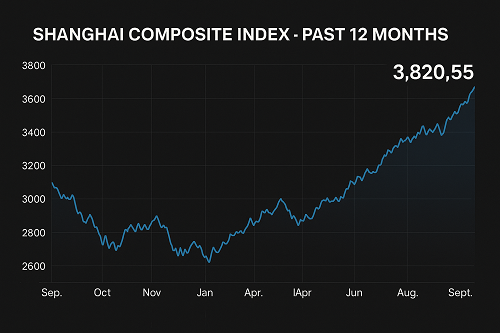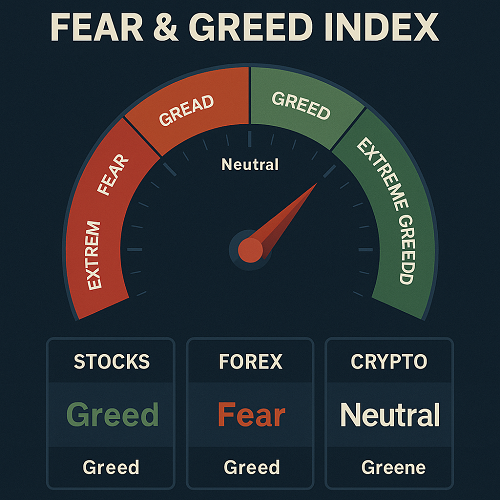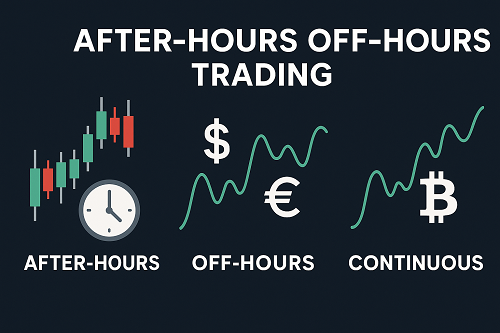Sprouts Farmers Market, Inc. (NASDAQ: SFM) has quietly become one of the most intriguing stocks in the U.S. grocery and organic retail sector. As of late October 2025, SFM trades near $106 per share, down modestly from its recent high of $109 but up more than 40% year-to-date, far outpacing the S&P 500’s 14% return.
This performance has caught the attention of both value and growth investors. With organic food adoption soaring and inflation reshaping consumer habits, Sprouts’ small-format, high-margin stores are positioned squarely between discount retailers and premium organic chains like Whole Foods. The big question investors are asking:
Can Sprouts Farmers Market sustain its momentum and deliver long-term alpha through 2026?
Let’s break down its fundamentals, forecast, valuation, and trading potential.
Company Overview: The Sprouts Farmers Market Business Model
Founded in 2002 and headquartered in Phoenix, Arizona, Sprouts Farmers Market operates more than 400 stores across 23 states, specializing in fresh, natural, and organic groceries at accessible prices.
Strategic Differentiators
- Open-market concept: Produce-first layout emphasizing freshness and sensory appeal.
- Private-label growth: Sprouts-branded products now account for over 20% of total sales, delivering higher margins.
- Health-focused assortment: Heavy skew toward vitamins, supplements, and specialty diets (keto, gluten-free, plant-based).
- Efficient supply chain: Smaller stores (~25,000 sq ft vs. Whole Foods’ ~40,000 sq ft) enable rapid restocking and localized sourcing.
- Omnichannel integration: Partnerships with Instacart and DoorDash for same-day delivery; digital sales now exceed 13% of total revenue.
This combination makes Sprouts a category disruptor—smaller than big-box grocers but more scalable than boutique health markets.
The Organic Grocery Landscape: Trends and Market Forces
The organic grocery segment continues to outperform traditional retail. According to the Organic Trade Association, U.S. organic food sales surpassed $70 billion in 2024, growing at 6.5% CAGR over the past five years.
Tailwinds Supporting SFM
- Health & wellness megatrend: Millennials and Gen Z are driving structural demand for fresh, minimally processed foods.
- Sustainability focus: Ethical sourcing, local produce, and clean labels resonate with high-income, urban consumers.
- Rising disposable income: Even with inflation, consumers maintain demand for health-oriented products.
Competitive Challenges
Sprouts faces strong competition from Whole Foods (Amazon), Kroger, Costco, and Walmart, all of which have expanded organic offerings. Still, Sprouts’ localized, small-store model allows it to penetrate secondary markets that national chains often overlook—creating room for measured, profitable expansion.
Recent Financial Performance (2024–2025)
Sprouts has delivered one of the strongest financial runs in its history.
Q2 2025 Highlights
- Net sales: Up 14.8% year-over-year to $1.92 billion.
- Comparable store sales: +8.6%, exceeding the company’s own 7–9% guidance.
- Net income: $130 million, up 16%.
- EPS: $1.42 vs. $1.23 YoY.
- Gross margin: 36.4%, reflecting a shift toward private label and fresh produce.
- New stores: 12 opened in Q2; full-year 2025 guidance for ~35 openings.
Cash Flow & Balance Sheet
- Operating cash flow > $550 million TTM.
- Low net debt with debt-to-equity ≈ 0.15.
- Active share buyback program; Sprouts repurchased $250 million of shares YTD 2025.
Guidance
For FY 2025, management expects:
- Net sales growth: 14–16%.
- EPS growth: 12–15%.
- Comparable sales growth: 7.5–9%.
These results show a mature but expanding retailer delivering both growth and profitability—a rare balance in the grocery industry.
Analyst Sentiment and Price Targets
Across Wall Street, the consensus remains bullish.
| Source | Consensus Rating | Avg Target Price | Implied Upside |
|---|---|---|---|
| MarketBeat | Moderate Buy (10 Buy / 5 Hold) | $165.79 | +53% |
| Zacks | Buy | $179 | +60% |
| TipRanks | Moderate Buy | $171 | +56% |
| WalletInvestor | Neutral | $159 | +50% |
Earnings Forecasts
- 2025 EPS: $5.32 → 2026 EPS: $5.92 → 2027 EPS: $6.49**.
- Revenue projected to grow 8–9% annually, versus the grocery industry average of ~3%.
While expectations are high, analysts generally view Sprouts as one of the most efficient mid-cap retailers in the U.S. consumer sector.
Growth Catalysts for SFM Stock
1. Strategic Store Expansion
Sprouts plans ~35 new stores in 2025, focusing on the Southeast and Texas, regions with strong demographic tailwinds. Management targets 10% annual footprint growth over the next three years.
2. Private-Label Momentum
Private-label products deliver > 25% gross margins—versus ~18% for national brands. Sprouts’ focus on “Sprouts Brand” SKUs provides pricing flexibility and margin resilience during inflationary cycles.
3. Digital and Omnichannel Integration
Curbside pickup, home delivery, and mobile-app engagement have accelerated digital penetration to > 13% of total sales. The company’s loyalty app continues to grow user engagement, aiding retention and upselling.
4. Health & Organic Market Tailwinds
Consumers increasingly link diet to wellness, a long-term secular trend. The organic/natural market is expected to double by 2030, providing sustained demand for Sprouts’ niche.
5. Margin Optimization
Sprouts continues to optimize logistics and distribution centers, reducing spoilage and improving throughput efficiency. Strategic partnerships with local growers minimize transport costs.
Together, these catalysts underpin the bullish mid-term outlook for SFM.
Key Risks and Headwinds
1. Competitive Pressure
Retail giants such as Kroger, Costco, and Amazon have expanded their organic lines, creating price pressure and customer overlap.
2. Inflationary Costs
Rising input costs—produce, freight, and labor—can erode margins. Sprouts mitigates this through private-label expansion, but grocery inflation remains a structural risk.
3. Execution Risk
Aggressive store expansion may stretch operational resources. If new locations underperform, profitability could stall.
4. Valuation Risk
At ~22× earnings, SFM trades at a modest premium to peers (sector average ~19×). Any earnings miss could trigger a multiple compression.
5. Insider Selling
Recent insider sales reported on SimplyWall St indicate possible near-term caution from executives, though overall institutional ownership remains robust (~95%).
For risk-averse investors, these factors warrant close monitoring.
Valuation and Financial Metrics
| Metric | SFM (2025 Est.) | Grocery Industry Avg | Notes |
|---|---|---|---|
| P/E | 21.9× | 18.8× | Moderate premium justified by growth |
| PEG | 1.22 | 1.10 | Healthy valuation for stable growth |
| EV/EBITDA | 10.5× | 8.9× | Slightly elevated |
| ROE | 27.4% | 14.2% | Excellent efficiency |
| Net Margin | 4.9% | 2.1% | Strong profitability for the sector |
Interpretation
Sprouts trades at a premium valuation, but that premium is backed by superior returns and growth. If the company sustains double-digit EPS expansion, the stock could still deliver mid-teens annualized returns—even without multiple expansion.
Technical and Trading Analysis
From a trader’s standpoint, SFM’s technical picture shows strength within a clear uptrend.
Current Setup (as of Oct 2025)
- Price: $106.24
- 50-Day SMA: $102.10 (support)
- 200-Day SMA: $92.85 (major support)
- RSI: 61 → bullish but not overbought
- Volume: 1.8 million daily avg
Trading Zones
- Support: $102 → $95
- Resistance: $112 → $118
- Breakout Target: $130 (short-term)
- Medium-Term Target: $165 (based on analyst consensus)
Trader’s Outlook
Momentum traders could view pullbacks toward $100–102 as attractive entry points with a stop below $95. Long-term investors might scale in gradually, given the strong fundamentals.
12–18 Month Scenarios: Base, Bull, and Bear Cases
| Scenario | Assumptions | 2026 Target Price | Probability |
|---|---|---|---|
| Base Case | 8–9% sales growth, steady margins, 10–12% EPS growth | $165–$180 | 60% |
| Bull Case | 10%+ sales, margin expansion, continued re-rating | $190–$200+ | 25% |
| Bear Case | Slowing comps (<5%), inflation impact, valuation compression | $95–$110 | 15% |
Takeaway
The risk-reward profile skews favorably: downside limited to ~10–15%, while upside potential approaches 50–70% if guidance holds.
Final Thoughts: Is Sprouts Farmers Market Still a Buy?
Sprouts Farmers Market represents a compelling mid-cap growth story within a defensive sector. Its combination of health-conscious branding, localized expansion, private-label leverage, and operational efficiency sets it apart from mainstream grocers.
At ~22× earnings, it isn’t a deep-value play—but investors are paying for predictable earnings and durable demand. For traders, SFM offers technical momentum within a clear uptrend, while long-term holders gain exposure to the organic-food megatrend through a profitable operator.
Bottom Line
- For investors: Accumulate on dips below $100 for a 12–18-month target of $165–$180.
- For traders: Consider breakout setups above $112 with $130 short-term target.
- For risk management: Watch inflation and store-growth metrics closely.
Sprouts Farmers Market may not remain “hidden” for long—the fundamentals point to steady, organic growth and potential re-rating through 2026.





 XAUT-USD
XAUT-USD  AMD
AMD  MARA
MARA  SHOP
SHOP  BULL
BULL  CL=F
CL=F